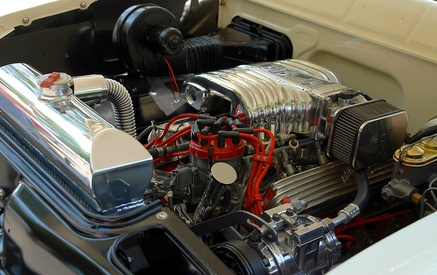
In the past, car manufacturers clearly outlined break-in procedures in the owner's manual. This tradition has carried over, and many mechanics recommend a break-in period after a new engine is installed. This period is where specific operating guidelines are followed. In reality, lubrication technology and materials engineering have greatly advanced so break-in is less critical. If the V-8 engine was assembled properly and quality engine components used, the break-in period is minimal. There are, however, some break-in guidelines that are useful.
Start the engine for the first time and hold the throttle to a high idle. If there is a tachometer available, do not let the engine fall below 2,000 to 3,000 RPM for the first few minutes. Shut the engine off and let it cool down. Check the engine coolant level and fill it as needed. This process protects the valve-train assembly and camshaft.
Test-drive the car on an isolated road and reach highway speed. Release the throttle and allow the car to coast and slow down. Repeat this process several times. The purpose is to equalize the pressure on the piston rings and allow them to seat properly against the cylinder wall. Combustion forces the rings to flex upwards. Coasting relieves this flexing, and the rings seat quickly.
Change the oil after 1,000 miles. Regardless of the oil recommendations, change the oil to remove microscopic metal shavings that develop as the engine parts seat while they move against each other. Use a quality oil and new filter.